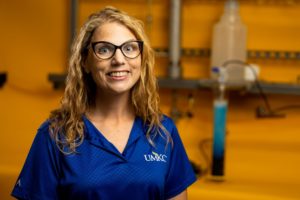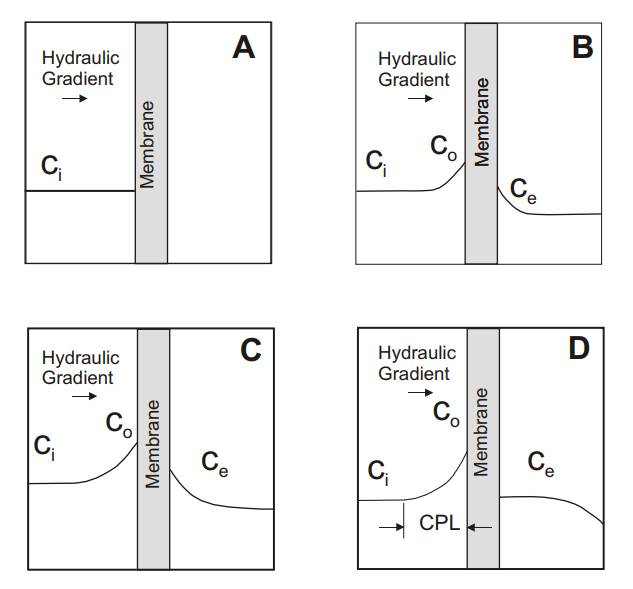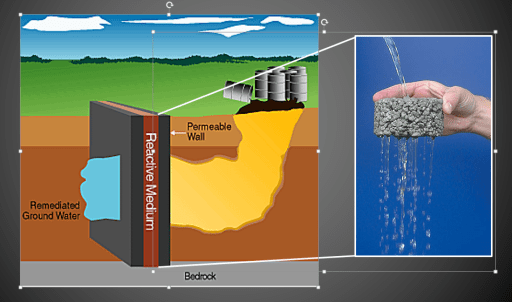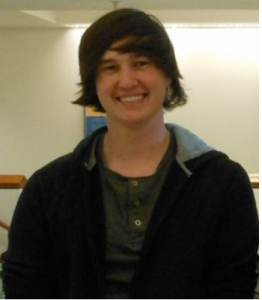
Megan Hart, Ph.D.
Associate Professor
Office: 370J Flarsheim Hall
Phone: 816-235-1270
Email
Degrees
- Ph.D., Geological Engineering, Missouri University of Science and Technology, 2009
- M.S., Geological Engineering, Missouri University of Science and Technology, 2003
- B.S., Geological Engineering, Missouri University of Science and Technology, 2005
- B.S., Geology, Western Washington University, 2001
Research Focus/Expertise
- PFAS and AFFF
- Heavy Metals
- Microplastics
- Permeable reactive materials
- Environmental remediation
Bio
Dr. Megan L. Hart is a nationally recognized expert in geotechnical engineering in-situ remediation techniques within the field of geo-engineering. Her first B.Sci. was conferred in Geology from Western Washington University with a minor in chemistry.
She received her second B.Sci., M.S. and Ph.D. degrees from Missouri University of Science and Technology in Geological Engineering with both thesis and dissertation focusing on the environmental processes of both natural and engineered semi-permeable barrier processes and technology. While obtaining her PhD, Dr. Hart worked as an environmental engineer for the Missouri Department of Natural Resources working in the areas of hazardous waste, groundwater analysis, and water and wastewater treatment. She joined the faculty of Saint Louis University in June, 2010 in the department of Civil Engineering as an assistant professor in geotechnics and geo-engineering.
In 2014, she joined the faculty at the University of Missouri – Kansas City. She is currently working on soil stabilization techniques using in-situ streaming potential of fine grained materials, remedial techniques using engineered best management practices for surface and groundwater, and a passive treatment system for levee stabilization of earthen cores. Dr. Hart is a University of Missouri Faculty Scholar and engages in pedagogical research pertaining to engineering student retention and perception of their choice of major.
Previously Dr. Hart’s clay research led to the creation of a passive filter process technique hat provide clean drinking water for developing worlds. Dr. Hart is a Registered Geologist in the State of Missouri.
Courses
CE400 – Independent Study Research
A limited number of undergraduate research opportunities are available each semester.Independent study research allows you to perform cutting edge research with advanced equipment during your undergraduate career on a flexible schedule. CE400 is a 3 credit technical elective for seniors and advanced junior students. The course is designed as a snapshot of a graduate research program with background research, testing plan development, and data analysis. The process with be guided with weekly meetings and regular discussions.
Students
Current Research Students
Graduate and undergraduate students interested in joining the research group are encouraged to send me a resume by email.
| PhD Students, Post-Doctoral Associates, and Visiting Scholars: |

Ryan Holmes, PhD CE 2018 Pervious Reactive Concrete for Energy Generation Wastewater |
| MS Students:
Andrew Ramsey, MS CE 2018 Pervious Reactive Concrete for Nutrient Removal
Ryan Holmes, MS CE 2016 |
| Undergraduate Students:
Andrew Ramsey Will Hitson Michael Frojd Chelsea Pfaffly Paige Norris Kelsey McCormick Jacob Asgian |
| Student Research Opportunities Spring 2018 A limited number of undergraduate research opportunities are available each semester. If you are interested please contact Dr. Hart as soon as possible. The following is a partial list of research opportunities. Past undergraduate researchers have received scholarships, published results in journals and conferences, and presented their results. |
Vitae
Education
Ph.D., Geological Engineering, July, 2009
Missouri University of Science & Technology, Rolla, MO
GeoMaterials and Remediation
M.S., Geological Engineering, May 2003
Missouri University of Science & Technology, Rolla, MO
Clay Membranes and Remediation
B.S., Geological Engineering, May 2005
Missouri University of Science & Technology, Rolla, MO
Groundwater Remediation Emphasis
B.S., Geology, March 2001
Petrology and Sedimentology
Professional Affiliations
American Society of Civil Engineers (ASCE)
American Society for Testing and Materials (ASTM)
Society of Women Engineers (SWE)
Research Profile
- Soil and Groundwater Pollution Control and Remediation
- PFAS Destruction
- Remedial Technologies
- Heavy Metals Remediation
- Waste Control
- Clay/Solution Interactions
On-Going Research
Title: Enhanced Pervious Concrete as a Permeable Reactive Barrier Technology
Funded by: UM Intellectual Property Fast Track Initiative
This project will complete research to convert the novel application of using actively enhanced pervious concrete (AEPC) as a permeable reactive barrier (PRB) for polluted groundwater treatment into a licensable technology. Preliminary results indicated a high potential for success with a provision patent filed by UMKC in spring 2014. In the United States about 131 million tons of fly ash is produced annually, of which only 50% is beneficially reused. Strict air regulations have resulted in the production of fly ash containing high amounts of unburnt carbon and sulfur, which are specifically forbidden in most current reuse methods. Fly ash is most commonly used as a supplementary cementitious material in concrete and for stabilization of clays. The unburnt carbon is activated which is problematic for air-entrainment in concrete, while high sulfur levels produce deleterious expansion when used for soil stabilization. Fortunately, the high sulfur and carbon levels are ideal for removal of contaminants in groundwater. Coupling these waste fly ash materials in pervious concrete used as a permeable reactive barrier technology, utilizes the sorptive capacity of both fly ash and carbonates within the mix. This technology has the potential to replace 25-50% of the shallow in-situ passive treatment technology within the US, and has much greater applications worldwide.
Clay Membranes and Coupled Flow

Enhanced Permeable Reactive Barriers
Dr. Hart and Dr. Kevern receive a provisional patent for passive groundwater treatment using enhanced pervious concrete as a permeable reactive barrier for groundwater treatment. For their work they were awarded Fasttrack funding to commercialize the technology and a NSF EAGER award to investigate the processes behind remediation in groundwater. In this research the investigators seek to leverage waste byproducts with little to no commercial value as a reactive material incorporated within a permeable media. Undergraduate and graduate students are actively performing this research under the direction of both professors. If interested in participating, email Dr. Hart

Landscape Scour From Flooding

Dr. Hart and Dr. Ana C. Londono investigated the landscape response to the intentional breach of the Birds Point New Madrid Floodway using terrestrial laser scanning (TLS) coupled with other remote sensing to determine the erosional mechanisms impacting the Floodway.
Read about their research here.



